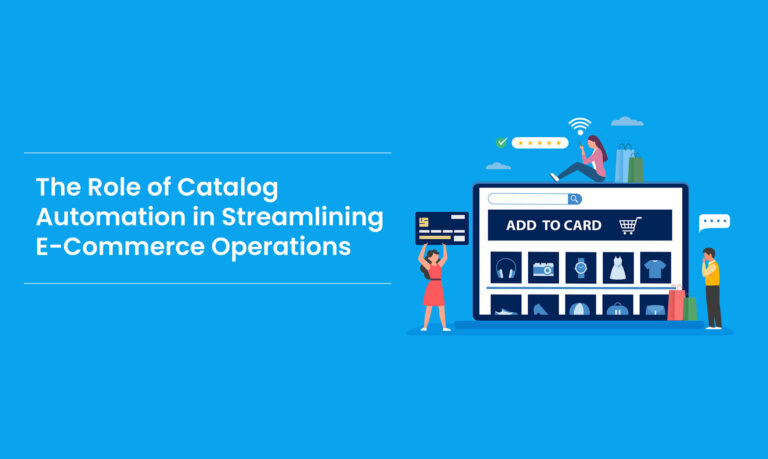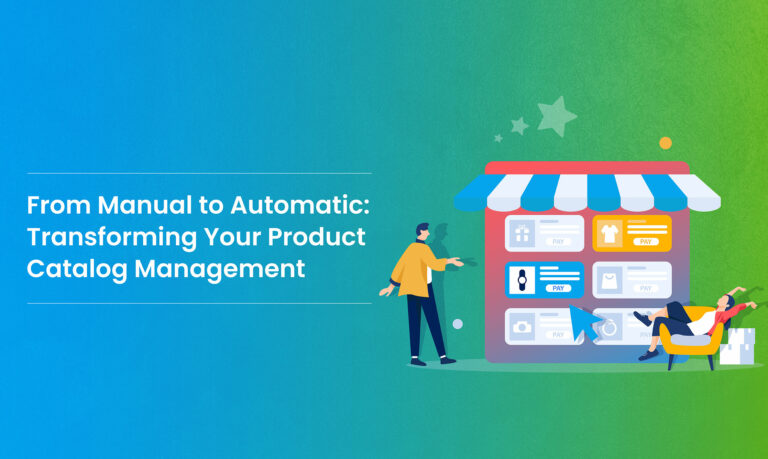Introduction
Organizations in the modern competitive business market always look for effective processes to reduce costs and boost efficiency. Another often neglected yet essential part of this optimization journey is catalog management. Keeping an accurate and current catalog is more difficult as companies continue to enlarge their product or service lines. This is where catalog automation becomes a revolutionary force, offering a wider array of advantages than mere time savings. This blog will examine the importance of catalog automation and its profound implications for businesses’ use.
What is Catalog Automation?
Catalog automation involves using technology to improve the way product catalogs are created, maintained, and updated. It involves software and tools to automate the catalog generation process, providing an organized way to present product or service information. However, catalog automation helps businesses dynamically generate catalogs from live data, allowing real-time changes in product information, prices, and availabilities. This type of technology usually works together with other systems, such as inventory management and e-commerce platforms, ensuring consistency across markets.
The main advantages of catalog automation are that it decreases manual labor, mitigates errors, and increases speed in adapting to variations in product inventory. It improves the overall customer journey, delivering accurate and current information, which improves sales and customer satisfaction. Catalog automation streamlines the catalog generation and maintenance framework, enabling businesses to present their products or services to the market more quickly and efficiently.
Key Features and Components of Catalog Automation Systems
Catalog Automation Systems are advanced tools that streamline the creation and management of product catalogs, offering efficiency and consistency in marketing efforts. Key features include dynamic content generation, enabling automatic updates based on inventory changes. These systems frequently include design components and templates to create a consistent and eye-catching catalog. Real-time updates and smooth data flow are ensured by integration with e-commerce platforms.
A user-friendly interface for simple customization, metadata management for accurate categorization, and reliable database systems to manage big product inventories are all parts of catalog automation systems. Automation tools allow for bulk import/export, reducing manual effort. Additionally, these systems often have analytics capabilities to track catalog performance and user engagement. Generating multiple versions of catalogs for various channels and formats enhances marketing adaptability. Overall, Catalog Automation Systems empower businesses to maintain accurate and attractive product catalogs with minimal manual intervention, fostering a more efficient and scalable marketing strategy.
The Challenge of Manual Catalog Management
Why catalog automation is needed? Let’s discuss the challenges of manual catalog management.
A. Time-Consuming and Prone to Errors
Catalog management is a tedious process that requires updating product information, prices, and availability. Human errors, typographical errors, and out-of-date information can easily happen during this manual process, and such discrepancies can be cited between the catalog and the true inventory.
B. Scalability Issues
As businesses expand, the amount and level of their product portfolios increase. However, manual catalog management cannot accommodate scalability requirements, leading to delays, inefficiencies, and a higher error propensity.
C. Limited Agility
Manual cataloging must acquire the agility to respond to fast-changing market dynamics. In the current fast-changing business environment, the capability to amend product details easily is important for competitiveness.
Understanding Catalog Automation
Now, what is catalog automation? Let’s understand the meaning and integration in brief.
A. Definition and Scope
Catalog automation refers to software tools and technologies that help automate creating, maintaining, and distributing product or service catalogs. These solutions use automation to update information, synchronize data across several platforms, and guarantee uniformity in product listings.
B. Integration with ERP Systems
Most of the automated catalog tools are compatible with ERP systems. This integration allows for real-time data synchronization, meaning that any changes made in the ERP system are automatically depicted in the catalog, eliminating manual updates.
C. Dynamic Catalogs
With catalog automation, real-time dynamic catalogs can be developed. This guarantees that the customers will always have the latest and correct product information, which increases the customer experience.
Key Benefits of Catalog Automation
Let’s discuss the major benefits of catalog automation for your business.
A. Time and Cost Savings
Catalog automation leads to considerable savings of time and resources, which is its major benefit. Automated processes take away the need for repetitive tasks and enable employees to focus on more advanced and value-generating activities.
B. Improved Accuracy
Automation reduces the risk of human errors that may occur in manual catalog management. Dependable product information helps avoid discrepancies between the catalog and actual production, which builds trust with clients and partners.
C. Enhanced Scalability
Catalog automation is meant to grow a business. No matter if the business is adding more products to the catalog or launching into new markets, automated solutions are flexible enough to accommodate the increased volume and intricacy of managing catalogs.
D. Real-Time Updates
Auto catalogs make the updates in real-time so that the clients and all internal stakeholders receive the latest information. This responsiveness is especially important in sectors where product data, prices, or availability often change.
E. Increased Agility
One of the benefits of catalog automation is business agility. In dynamic markets, businesses can respond rapidly to change, launch new products, or remodify existing ones.
Choosing the Right Catalog Automation Solution
Tips to choose the perfect catalog automation solution for your business.
A. Integration Capabilities
Integration with existing systems such as ERP, CRM, and e-commerce platforms is crucial when selecting catalog automation solutions. This integration guarantees a seamless data flow and avoids disruptions to the ongoing workflow.
B. Customization and Flexibility
Every business has specific catalog management requirements. The selected automation solution must be customizable and flexible enough to meet the organization’s unique needs. This includes customizing the catalog’s look, shape, and data fields.
C. Scalability
Catalog management has to adapt and change as businesses develop. Choosing a scalable automation solution guarantees that the picked tool can grow along with an expanding product portfolio and exponentially growing data complexity without reducing performance.
D. User-Friendly Interface
The usability of the automation tool is crucial for successful implementation. This user-friendly interface keeps the employees’ learning curve short and assures that you can benefit from the automation features without much training.
Catalog Automation Technology Future Trends
The shift that catalog automation technology promises for the future is an efficiency that is unprecedented and truly personal. AI and machine learning will be key components, allowing businesses to shift their product lines depending on customer behavior. Sophisticated algorithms will simplify content production, allowing real-time updates and tailored suggestions. Augmented reality (AR) is expected to change the way customers browse, and customers will be able to view products before making a decision. The integration with IoT devices will enable better consumer data collection, allowing a deeper understanding of consumer needs. Furthermore, blockchain technology could offer a secure and transparent structure for catalog control, maintaining data integrity and minimizing fraud. With the growth of e-commerce, catalog automation will be the foundation of agility, personalization, and the desire to deliver a smooth customer experience.
Conclusion
The adoption of catalog automation is more than a tactical choice for businesses; it is a vital step toward remaining competitive and effective in today’s competitive and competitive market. The catalog automation benefits are numerous, from eliminating human errors and increasing uniformity to accelerating product information management in speed and scalability. The automation of the catalog process allows businesses to shift their efforts and investments toward innovation, engagement, and general development. With the constant changes in the world of trade, it is clear that catalog automation is not a luxury but an inevitable necessity. Companies that realize the need to simplify their catalog management will no doubt secure themselves in the future of the digital age.
To begin this transformative journey, try exploring the use of innovative technologies such as Rubick.ai. With its cutting-edge solutions, Rubick.ai empowers businesses to automate their catalog processes intelligently, offering a seamless and efficient approach. Leap into the future of commerce with Rubick.ai—your partner in cataloging excellence.

